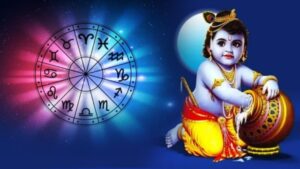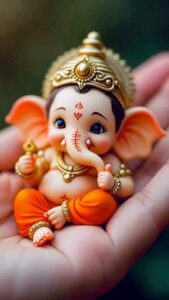
Navratri is a bright nine-day Hindu festival where we celebrate the nine forms of Goddess Durga. It happens twice a year—first in the spring with Chaitra Navratri from March 30th to April 7th, 2025, and then again in the autumn for Sharad Navratri from September 22nd to October 2nd. If you’re curious about the details, you can check out Navratri Dates or Durganavratri Calendar.
The third day of Navratri, dedicated to Maa Chandraghanta, falls on April 1st during Chaitra Navratri and September 24th during Sharad Navratri in 2025. Maa Chandraghanta is the epitome of bravery, grace, and calmness. Her name comes from the crescent moon (Chandra) that resembles a bell (Ghanta), which she wears on her forehead, symbolizing her fierce protection that instills fearlessness in her followers. She’s often depicted with ten hands holding various weapons while riding a lion, which represents courage and the destruction of evil forces. People believe that worshipping Maa Chandraghanta can help eliminate sins, sorrows, and mental struggles, leading to peace and prosperity.
Puja Rituals and Mantra Jaap
On Navratri Day 3, devotees kick off the rituals by waking up early and purifying themselves with a bath. The puja involves offering milk, sweets, and flowers, especially white lotuses, to Maa Chandraghanta. Lighting a ghee lamp and burning incense sticks sets a holy atmosphere. Chanting specific mantras is a key part of this worship, with the main mantra being:
“ॐ देवी चन्द्रघण्टायै नमः” (Om Devi Chandraghantayai Namah)
Reciting this mantra 108 times during the puja is thought to call forth the goddess’s blessings, boosting courage and spiritual growth. Also, reading or listening to the Durga Saptashati and singing hymns dedicated to Maa Chandraghanta enhances the devotional experience.

Fasting on the Third Day of Navratri
Fasting is a common tradition during Navratri, and many followers observe a fast on the third day to pay homage to Maa Chandraghanta. The type of fast can be different; some may practice a strict fast, refraining from all food and water, while others choose a partial fast, consuming fruits, milk, and certain non-grain foods. The idea is to keep the body and mind pure, steering clear of tamasic foods like onions, garlic, and non-vegetarian items. Typically, this fast is broken in the evening after completing the day’s puja and offering bhog (sanctified food) to the goddess.
Colour of the Day: Grey
Every day of Navratri is associated with a specific colour, and the colour for the third day is grey. Grey stands for balance and neutrality, reflecting Maa Chandraghanta’s power to dispel negativity and promote harmony. Devotees are encouraged to wear grey during the puja to harmonize with the day’s energy and seek the goddess’s blessings for a balanced life.
Conclusion
“At apnasanatan.com, we have partnered with specialists having rich experience in astrology. All knowledge on our platform has been verified and fact checked.
Visit www.apnasantan.com or download on mobile to stay connected to the Sanatani way.



